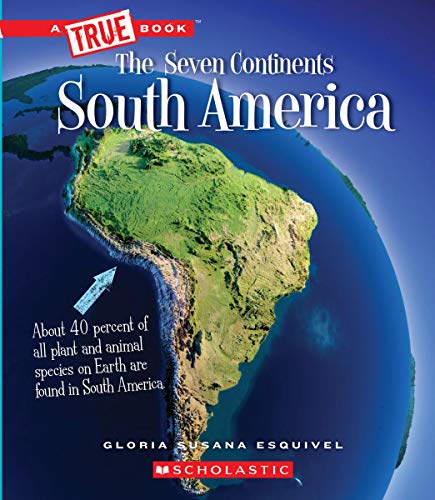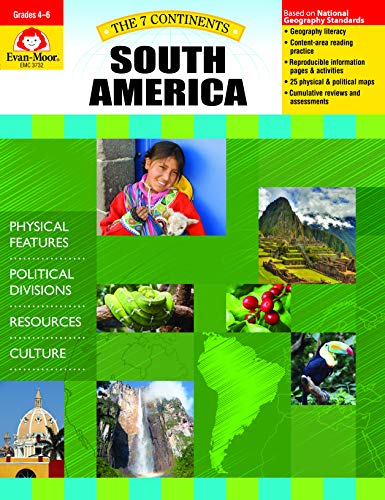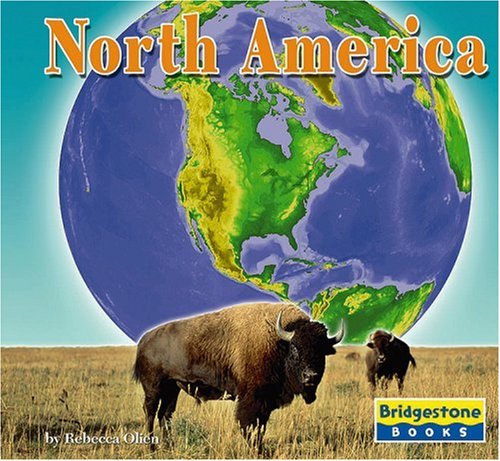-
Europe
Evan Moor
Paperback (Evan Moor Educational Publishers, Jan. 1, 2011)Develop geography literacy while learning about the unique characteristics of Europe!The 7 Continents: Europe helps students learn about Europe through engaging reading and writing activities.Five geography units cover the following standards-based topics:Section 1: Europe in the WorldIntroduces students to the location of Europe in the world.-Europe's Relative Location-Europe's Hemispheres-Europe's Absolute Location-Using a Projection MapSection 2: Political Divisions of EuropeIntroduces students to the four regions and 44 countries of Europe.-Political Divisions of Europe-Population of Europe-Countries of Europe-Largest Countries by Area-Largest Countries by Population-Western Europe-Eastern Europe-Southern Europe-Northern Europe-Capital Cities of Europe-Communism in Europe-European UnionSection 3: Physical Features of EuropeStudents learn about the landforms and bodies of water of Europe.-Europe's Landscape-European Peninsulas-European Islands-Mountains of Europe-Volcanoes of Europe-Europe's Forests-Northern Tundra-Europe's Bodies of Water-Seas of Europe-Rhine River-Norway's FjordsSection 4: Valuable Resources of EuropeStudents learn about the various natural resources of Europe.-Oil Production in Europe-Fishing in Europe-Grains and Potatoes-Olives-Wine Production-Livestock-Europe's Forests-Wildlife of EuropeSection 5: European CultureIntroduces students to the architecture, arts, beliefs, and traditions of Europe.-Tourist Attractions-Fine Art-Music-Languages-Religions-European Cuisine-CelebrationsThis resource contains teacher support pages, reproducible student pages, and an answer key. S
S
-
Antarctica
Evan Moor
Paperback (Evan Moor Educational Publishers, Jan. 1, 2011)Develop geography literacy while learning about the unique characteristics of Antarctica!The 7 Continents: Antarctica helps students learn about Antarctica through engaging reading and writing activities.Five geography units cover the following standards-based topics:Section 1: Antarctica in the WorldIntroduces students to the location of Antarctica in the world.-Antarctica's Relative Location-Antarctica's Hemispheres-Antarctica's Absolute Location-Using a Projection MapSection 2: Physical Features of AntarcticaIntroduces students to the highest, driest, coldest, and iciest continent on the planet.-Formation of Antarctica-Antarctica's Harsh Landscape-East Antarctica-West Antarctica-Antarctic Mountains-Antarctic Ice-Antarctica's Climate-Climate Changes in Antarctica-Antarctica's Bodies of WaterSection 3: History of ExplorationStudents learn about the diverse history of Antarctica's discovery and exploration.-Unknown Southern Land-Early Exploration-Bellingshausen and Weddell-Ross and Wilkes-Belgica Stranded-Heroic Age-Race to the South Pole-Mawson and Shackleton-Exploration by Air-Admiral ByrdSection 4: People of Antarctica TodayStudents learn about the people who research, visit, and live in Antarctica.-Antarctica Treaty-Antarctica's Scientific Research-Female Scientists-Communication in Antarctica-Tourism in AntarcticaSection 5: Natural Resources and WildlifeIntroduces students to the natural resources and wildlife of Antarctica.-Resources of Antarctica-Lichens, Fungi, Moss, and Algae-Land Invertebrates-Animals in the Ocean-Animals: Visitors on Land-Antarctica's Web of LifeThis resource contains teacher support pages, reproducible student pages, and an answer key. S
S
-
Australia and Oceania
Evan Moor
Paperback (Evan Moor Educational Publishers, Jan. 1, 2011)Develop geography literacy while learning about the unique characteristics of Australia and Oceania!The 7 Continents: Australia and Oceania helps students learn about Australia and Oceania through engaging reading and writing activities.Five geography units cover the following standards-based topics:Section 1: Australia and Oceania in the WorldIntroduces students to the location of Australia and Oceania in the world.-Australia and Oceania's Relative Location-Australia and Oceania's Hemispheres-Australia and Oceania's Absolute Location-Using a Projection MapSection 2: Political Divisions of Australia and OceaniaIntroduces students to the four regions and 14 countries of Australia and Oceania.-Population of Australia and Oceania-Countries of Australia and Oceania-Largest Countries by Area-Smallest Countries by Area-Largest Countries by Population-Dependent Territories-Australia-Melanesia-Micronesia-Polynesia-Capital CitiesSection 3: Physical Features of Australia and OceaniaStudents learn about the landforms and bodies of water of Australia and Oceania.-Landscapes of Australia and Oceania-Mountain Ranges-Deserts of Australia-Rainforests-Islands of Oceania-The Great Barrier Reef-Uluru-Bodies of Water-Australia's Lakes-Australia's Rivers-New Zealand's FjordsSection 4: Valuable Resources of Australia and OceaniaStudents learn about the various natural resources of Australia and Oceania.-Coal in Australia-Hydroelectricity in New Zealand-Mining Metals and Minerals-Agriculture in Australia-Sheep Farming-Fishing in Oceania-Oceania Tourism-Unique WildlifeSection 5: Australina and Oceanian CultureIntroduces students to the beliefs and traditions of the people of Australia and Oceania.-Australia and Oceania's Tourist Attractions-Arts and Entertainment in Australia and Oceania-Major Religions of Australia and Oceania-Native Cultures of Australia and Oceania-Australian and Oceanian Cuisine-Celebrations of Australia and OceaniaThis resource contains teacher support pages, reproducible student pages, and an answer key. W
W
-
Asia: Grades 4-6+
Sandi Johnson, Marilyn Evans, Andrea Weiss, Wendy Zamora
Paperback (Evan-Moor Corp, Jan. 1, 2011)Develop geography literacy while learning about the unique characteristics of Asia!The 7 Continents: Asia helps students learn about Asia through engaging reading and writing activities.Five geography units cover the following standards-based topics:Section 1: Asia in the WorldIntroduces students to the location of Asia in the world.-Asia's Relative Location-Asia's Hemispheres-Asia's Absolute Location-Using a Projection MapSection 2: Political Divisions of AsiaIntroduces students to the six regions and 50 countries of Asia.-Population of Asia-Countries of Asia-Largest Countries by Area-Largest Countries by Population-Southwest Asia-South Asia-Central Asia-North Asia-East Asia-Southeast Asia-Largest Cities of AsiaSection 3: Physical Features of AsiaStudents learn about the landforms and bodies of water of Asia.-Asia's Landscape-The Himalayas-Trek to the Summit of Everest-The Indian Subcontinent-The Arabian and Gobi Deserts-Siberia's Landforms-Japan's Islands-Asia's Tropical Rainforests-Asia's Bodies of Water-Asia's Inland Seas and Lakes-Important Rivers of AsiaSection 4: Valuable Resources of AsiaStudents learn about the various natural resources of Asia.-Oil Production in Asia-China's Coal Energy-Fishing in Asia-Rice: An Asia Staple-Asia's Forests-Amazing Wildlife of Asia-Tigers of Asia-Working AnimalsSection 5: Asian CultureIntroduces students to the architecture, education, arts, beliefs, and traditions of Asia.-Tourist Attractions-Arts and Entertainment-Major Religions of Asia-Education of Asia-Asian Cuisine-CelebrationsThis resource contains teacher support pages, reproducible student pages, and an answer key. V
V
-
South America
Gloria Susana Esquivel
Paperback (Children's Press, Feb. 1, 2019)An incredible variety of climates and biomes span the territory of South America. As a result, the continent contains some of the greatest biodiversity on Earth.A True Book: The Seven Continents series dives into the many components that make each continent distinctive and exceptional. Readers will get to know each continents' geography, history, wildlife and future outlook. This series includes an age appropriate (grades 3-5) introduction to curriculum-relevant subjects and a robust resource section that encourages independent study. Readers will explore all that South America has to offer as they journey across its incredible landscapes, stopping along the way to discover more about its history and visit with its many diverse peoples. P
P
-
South America
Evan Moor
Paperback (Evan Moor Educational Publishers, Jan. 1, 2011)Develop geography literacy while learning about the unique characteristics of South America!The 7 Continents: South America helps students learn about South America through fun reading and writing activities.Five geography units cover the following standards-based topics:Section 1: South America in the WorldIntroduces students to the location of South America in the world.-South America's Relative Location-South America's Hemispheres-South America's Absolute Location-Using a Projection MapSection 2: Political Divisions of South AmericaIntroduces students to the three regions and 12 countries of South America.-Population of South America-Countries of South America-Largest Countries by Area-Largest Countries by Population-Western South America-Population of Western South America-Northern South America-Population of Northern South America-Eastern South America-Population of Eastern South America-Capital Cities of South AmericaSection 3: Physical Features of South AmericaStudents learn about the landforms and bodies of water of South America.-South America's Diverse Landscape-Andes Mountains-Highlands of South America-Plains of South America-Amazon Rainforest-Atacama Desert-Tierra del Fuego-Bodies of Water-Lake Titicaca-Amazon River-Angel FallsSection 4: Valuable Resources of South AmericaStudents learn about the various natural resources of South America.-Oil in Venezuela-Itaipu DamMining Copper in Chile-Agriculture-Cattle-Llamas and Alpacas-Rainforest Resources-Amazon Rainforest Wildlife-Galapagos Islands WildlifeSection 5: South American CultureIntroduces students to the architecture, art, beliefs, and traditions of South American people.-Tourist Attractions-Arts and Entertainment,br>-Religions of South America-Native Cultures-South American Cuisine-CelebrationsThis resource contains teacher support pages, reproducible student pages, and an answer key. T
T
-
North America
Evan Moor
Paperback (Evan Moor Educational Publishers, Jan. 1, 2011)Develop geography literacy while learning about the unique characteristics of North America!The 7 Continents: North America helps students learn about North America through engaging reading and writing activities.Five geography units cover the following standards-based topics:Section 1: North America in the WorldIntroduces students to the location of North America in the world.-North America's Relative Location-North America's Hemisphere-North America's Absolute Location-Using a Projection MapSection 2: Political Divisions of North AmericaIntroduces students to the five regions and 23 countries of North America.-Population of North America-Countries of North America-Largest Countries by Area-Largest Countries by Population-Canada and Greenland-The United States and Its Territories-Mexico-Central America-The Caribbean-Capital Cities of North AmericaSection 3: Physical Features of North AmericaStudents learn about the landforms and bodies of water of North America.-North America's Landscape Rocky Mountains Grand Canyon-Deserts of North America-Frozen North-Central American Rainforests-Islands of the Caribbean-North America's Bodies of Water-Great Lakes-North American Rivers-Panama CanalSection 4: Valuable Resources of North AmericaStudents learn about the various natural resources of North America.-Fossil Fuels-Hydroelectricity-Renewable Energy-Fishing-Corn and Livestock-Coffee and Bananas-North America's Forests-Wildlife of North AmericaSection 5: North American CultureIntroduces students to the architecture, art, beliefs, and traditions of North American people.-Tourist Attractions-Arts and Entertainment-Religions of North America-Native Cultures-North American Cuisine-CelebrationsThis resource contains teacher support pages, reproducible student pages, and an answer key. T
T
-
Africa
Evan Moor
Paperback (Evan Moor Educational Publishers, Jan. 1, 2011)Develop geography literacy while learning about the unique characteristics of Africa!The 7 Continents: Africa helps students learn about Africa through engaging reading and writing activities.Five geography units cover the following standards-based topics:Section 1: Africa in the WorldIntroduces students to the location of Africa in the world.-Africa's Relative Location-Africa's Hemispheres-Africa's Absolute Location-Using a Projection MapSection 2: Political Divisions of AfricaIntroduces students to the five regions and 53 countries of Africa.-Population of Africa-Countries of Africa-Largest Countries by Area-Smallest Countries by Area-Largest Countries by Population-Northern Africa-Western Africa-Central Africa-Eastern Africa-Southern Africa-Largest Cities of AfricaSection 3: Physical Features of AfricaStudents learn about the landforms and bodies of water of Africa.-Africa's Landscape-Mount Kilimanjaro-Great Rift Valley-Africa's Deserts-African Savanna-Africa's Rainforests-Madagascar-Africa's Bodies of Water-Africa's Lakes-Major Rivers of Africa-Amazing Waterfalls of AfricaSection 4: Valuable Resources of AfricaStudents learn about the various natural resources of Africa.-Oil Production in Africa-Mining for Gold and Diamonds-Farming in Africa-Sharing the Nile River-Africa's Cacao and Coffee-African Safaris-The Great Migration-Africa's Desert Animals-Rainforest AnimalsSection 5: African CultureIntroduces students to the wide variety of traditional African cultures.-Tourist Attractions-Arts and Crafts-Three African Fabrics-Music and Dance-Languages of Africa-Major Religions of Africa-African CuisinesThis resource contains teacher support pages, reproducible student pages, and an answer key. S
S
-
Africa
Zukiswa Wanner
Paperback (Children's Press, Feb. 1, 2019)Africa is often called the Cradle of Humankind. Millions of years ago, it was home to the very first humans, and today it remains a vibrant land filled with diverse cultures.A True Book: The Seven Continents series dives into the many components that make each continent distinctive and exceptional. Readers will get to know each continents' geography, history, wildlife and future outlook. This series includes an age appropriate (grades 3-5) introduction to curriculum-relevant subjects and a robust resource section that encourages independent study.Readers will tour Africa's varied landscape and get a close look at its many iconic plants and animals. They will also learn about the continent's history and discover how its people live today. S
S
-
Europe
Joana Costa Knufinke
Paperback (Children's Press, Feb. 1, 2019)An introduction to the geography and people of Europe.A True Book: The Seven Continents series dives into the many components that make each continent distinctive and exceptional. Readers will get to know each continents' geography, history, wildlife and future outlook. This series includes an age appropriate (grades 3-5) introduction to curriculum-relevant subjects and a robust resource section that encourages independent study.Readers will explore the entirety of this incredible continent, from the far reaches of Scandinavia to the Mediterranean Coast. Along the way, they will learn about important moments in Europe's past, get to know its people, and come face to face with its wide range of wildlife. S
S
-
North America
Karen Kellaher
Paperback (Children's Press, Feb. 1, 2019)North America is a beautiful continent with sprawling land that encompasses everything from icy tundra and green forests to bone-dry deserts and rocky mountain peaks.A True Book: The Seven Continents series dives into the many components that make each continent distinctive and exceptional. Readers will get to know each continents' geography, history, wildlife and future outlook. This series includes an age appropriate (grades 3-5) introduction to curriculum-relevant subjects and a robust resource section that encourages independent study.Readers will get to know the whole continent as they tour its rugged natural landscapes and densely populated cities. Along the way, they will encounter unique wildlife, get a taste of the local culture, and more. S
S
-
North America
Karen Bush Gibson
Paperback (Capstone Press, Jan. 1, 2006)Describes the continent of North America, including its climate, landforms, plants, animals, countries, and people. O
O